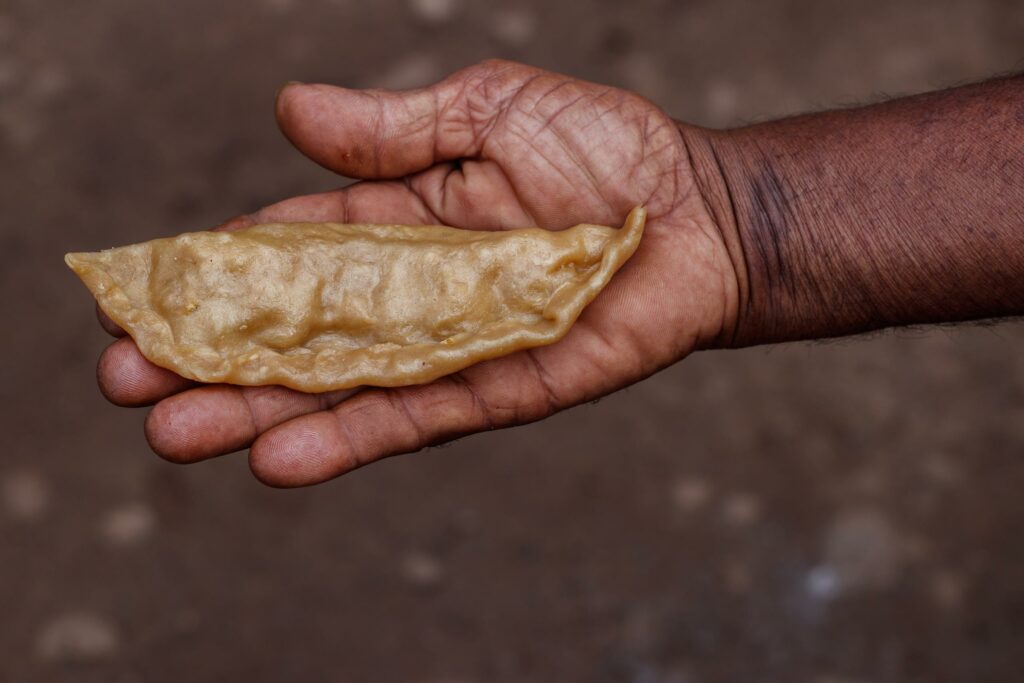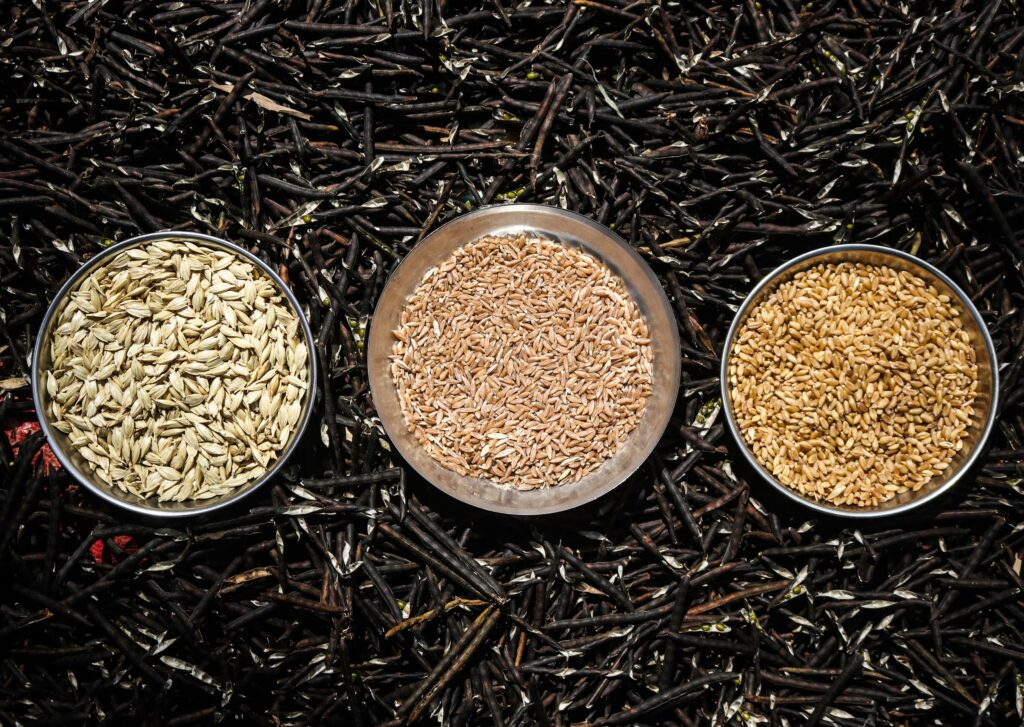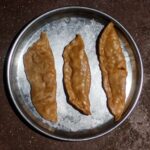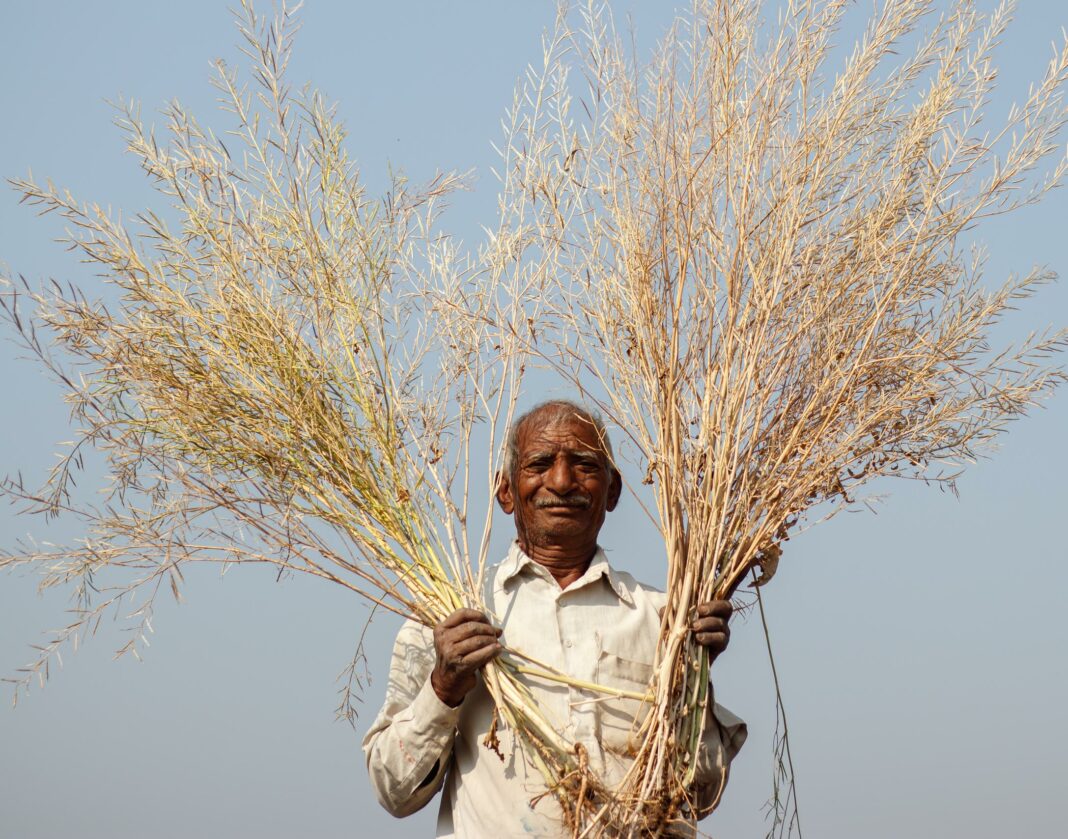It’s time to reconsider this heirloom wheat variety that’s hardier and more nutritious than hybrid wheat.
Whenever someone asks seventy-six-year-old farmer Narayan Gaikwad how he works ten hours in the scorching heat of Jambhali village in India’s Maharashtra state, he responds by asking people what they eat for breakfast. Gaikwad eats traditional sweet dumplings made using emmer wheat (Triticum dicoccum), jaggery (a kind of cane sugar), turmeric leaves, and split chickpea lentils. “Emmer wheat has a high protein and fiber content,” he explains. If he gets tired, he eats more of this snack, which he says helps him restore his energy.
For more than 150 years, the Gaikwad family has made these dumplings — called dalicha kanola in the regional Marathi language. They are one of the last families to do so. Over time, these dumplings have become harder to find, and although it once was common, emmer now makes up less than one percent of total wheat cultivation in India (the second-highest producer of wheat globally).

Emmer wheat (also known as farro) originated 10,000 years ago in the Middle East. Recently, however, it has been replaced with several genetically modified, hybrid wheat varieties that yield more in less time. In Maharashtra, the farmers cultivating hybrid varieties report a yield of almost 1,500 kilograms (3,300 pounds) of wheat per acre, whereas Gaikwad, who grows traditional emmer wheat, reports harvesting around 900 kilograms (roughly 2,000 pounds).
Gaikwad’s conviction that he owes his stamina and good health to his consumption of emmer wheat is backed up by promising research showing that it might be better than other varieties of wheat for people with diabetes. It is easy to digest, it’s rich in fiber, minerals, and vitamins, and it helps reduce triglycerides and bad cholesterol. Compared with modern wheat varieties, it has a higher protein content and is also rich in antioxidants, which help reduce cardiovascular risk factors.

But emmer wheat boasts another important attribute: because its strong husks separate into smaller components, called spikelets, that are impenetrable by pests, growing emmer wheat doesn’t require chemical pesticides. What’s more, it is extremely resilient — withstanding heat waves, heavy rainfall, and climatic fluctuations. Compared to hybrid varieties, emmer wheat can grow in both colder and warmer conditions, and in less fertile soils. In 2022, India reported a three percent decline in hybrid wheat yields owing to heat waves. The Indian Government responded by banning wheat exports, affecting several countries.

Locally, beyond being the main ingredient in Narayan’s breakfast dumplings, emmer wheat is used to make a pudding eaten during festivals and special occasions. And, according to Narayan, “wrestlers eat [emmer wheat] porridge and flatbread daily, which helps them remain fit. People always talk about eating nutritious food, but none want to grow healthy grains. By abandoning the traditional foods, we are decreasing our lifespan.”
Print
Gaikwad Family’s Traditional Emmer Wheat Dumplings
- Yield: Makes around 30 dumplings 1x
Ingredients
- 17 ounces split chickpeas (also called yellow split peas, or chickpea lentils)
- 13 ounces sugar or jaggery
- Cardamom powder, to taste
- 14 ounces emmer wheat flour/common wheat flour
- Salt to taste
- 1 tablespoon ghee or oil
- 3–4 turmeric leaves
Instructions
- Boil split chickpea lentils until they become soft, roughly 20 minutes.
- Drain. Add sugar or jaggery and cardamom powder to the soft lentils and simmer for another 10-15 minutes.
- Combine the wheat flour, salt, and some ghee or oil to make dough. Knead this dough with your hands until it is well blended. Then form the dough into 1 ½-inch balls.
- Sprinkle some flour on a countertop or cutting board. Place each ball of dough, one at a time, on the floured surface and roll it into a circle five-inches in diameter.
- Place some of the split chickpea lentil stuffing in the center and fold this circular flatbread in half. Seal the edges by pressing gently. You can decorate the dumplings by folding them with a pastry cutter or using bare hands to make a design around the edges.
- Place the dumplings on top of turmeric leaves in a steamer and steam for 10-15 minutes, until the outer layer of the dumplings turns brownish.
- Check the dumplings for readiness. If they are sticky, give them another two or three minutes. Serve when ready.


